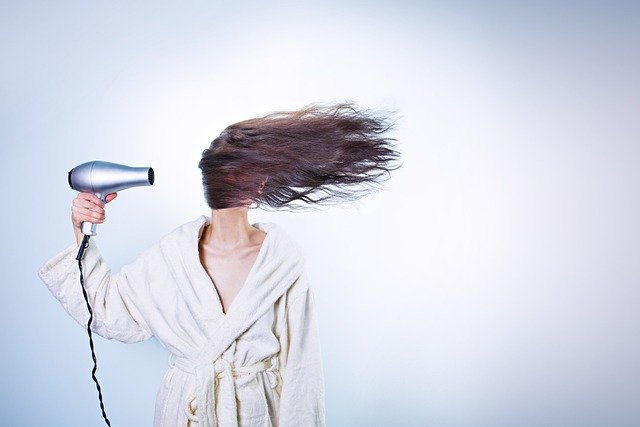How Hair Dryers Work and How to Use Them Every Day
Hair dryers are common tools people use to dry their hair quickly. They blow warm or cool air to help water evaporate. Learning how they work, the different types available, and how air settings affect drying can make using a hair dryer easier and more fun for daily routines.

How Hair Dryers Work
The fundamental principle behind how hair dryers work involves converting electrical energy into heat and airflow. Inside the device, an electric heating element, typically made of nichrome wire, generates heat when electricity passes through it. Simultaneously, a small motor powers a fan that draws air from the back of the dryer, pushes it over the heating element, and expels the heated air through the nozzle.
Modern hair dryers incorporate multiple heat settings and speed controls, allowing users to customize the temperature and airflow intensity. The heating element can reach temperatures between 80°F and 140°F, while the motor typically operates at speeds ranging from 3,000 to 20,000 RPM. Advanced models include ionic technology, which releases negative ions to break down water molecules more efficiently, reducing drying time and minimizing frizz.
Hair Dryer Types
Understanding different hair dryer types helps in selecting the right tool for specific hair needs. Conventional dryers are the most common and affordable option, featuring basic heat and speed settings suitable for everyday use. Ionic dryers emit negative ions to neutralize positive charges in wet hair, resulting in smoother, shinier results with reduced static.
Ceramic dryers distribute heat more evenly through ceramic heating elements, preventing hot spots that can damage hair. Tourmaline dryers incorporate crushed tourmaline gemstones into the heating element, producing infrared heat and negative ions for gentler drying. Professional-grade dryers offer higher wattage, typically between 1,800 and 2,000 watts, providing faster drying times and more durable construction for frequent use.
Using Hair Dryers Safely and Effectively
Proper techniques for using hair dryers begin with preparation. Always start with towel-dried hair to remove excess moisture, as this reduces overall drying time and heat exposure. Apply a heat protectant product to create a barrier between your hair and the hot air. Position the dryer at least six inches away from your scalp to prevent burns and hair damage.
Begin drying on a lower heat setting and gradually increase if needed. Move the dryer continuously rather than concentrating heat on one area for extended periods. For best results, direct the airflow from roots to ends, following the natural direction of your hair cuticles. This technique enhances shine and reduces frizz by smoothing the hair shaft.
Hair Drying Techniques for Different Hair Types
Effective hair drying techniques vary significantly based on hair texture, length, and desired styling outcomes. For fine or damaged hair, use the lowest heat setting with moderate airflow to prevent breakage. Thick or coarse hair can handle higher temperatures but benefits from sectioning to ensure thorough drying.
For volume enhancement, lift sections of hair at the roots while directing airflow upward. The cool shot button, available on most dryers, helps set the style by closing hair cuticles and locking in the shape. When creating smooth styles, use a round brush to guide hair while following with the dryer nozzle. For natural texture enhancement, use a diffuser attachment to distribute airflow evenly without disrupting curl patterns.
Advanced Features and Attachments
Modern hair dryers often include specialized attachments and features that enhance versatility. Concentrator nozzles focus airflow for precise styling and smoother results, while diffusers spread air over a wider area to maintain natural curl patterns. Pick attachments help create volume at the roots for fine or flat hair.
Temperature and speed controls allow customization based on hair type and styling goals. Some models feature automatic sensors that adjust heat based on hair moisture levels, preventing overheating. Ergonomic designs with balanced weight distribution reduce hand fatigue during extended use, making them ideal for professional applications or thick hair that requires longer drying times.
| Hair Dryer Model | Brand | Wattage | Key Features | Price Range |
|---|---|---|---|---|
| Supersonic | Dyson | 1,600W | Intelligent heat control, magnetic attachments | $300-$400 |
| Ionic Ceramic | Conair | 1,875W | Ionic technology, multiple heat settings | $30-$50 |
| Pro Dryer 2000 | BaBylissPRO | 2,000W | Professional grade, lightweight design | $80-$120 |
| PowerDry | Revlon | 1,875W | Ceramic coating, cool shot button | $25-$40 |
Prices, rates, or cost estimates mentioned in this article are based on the latest available information but may change over time. Independent research is advised before making financial decisions.
Maintenance and Longevity Tips
Regular maintenance extends hair dryer lifespan and ensures optimal performance. Clean the air intake filter monthly by removing lint and debris that can restrict airflow and cause overheating. Wipe the exterior with a damp cloth and avoid using harsh chemicals that might damage the housing.
Store your hair dryer in a dry location with adequate ventilation, and avoid wrapping the cord tightly around the device, as this can damage internal wiring. Replace attachments when they show signs of melting or cracking, and consider professional servicing if the motor sounds unusual or airflow decreases significantly.
Understanding how hair dryers work and implementing proper techniques transforms this common appliance into a powerful styling tool. Whether you have fine, thick, curly, or straight hair, mastering these fundamentals ensures healthier hair and more satisfying results from your daily routine.




